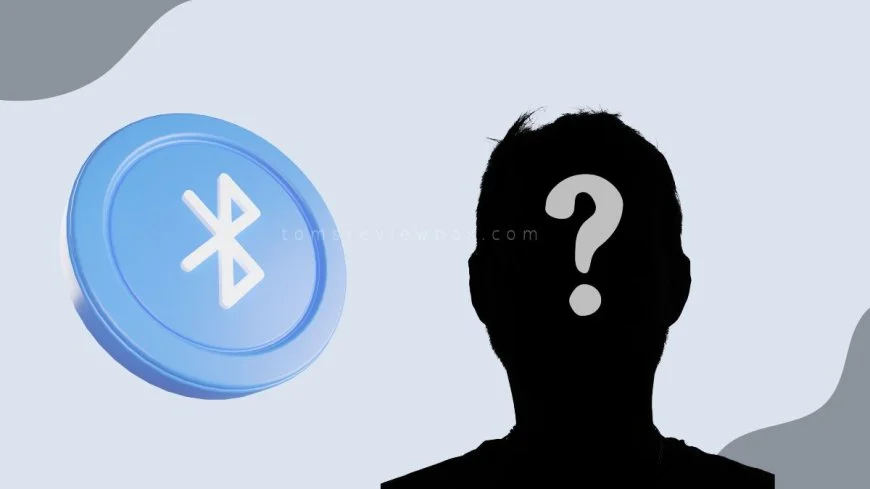Who Developed Bluetooth Technology? Meet Jaap C. Haartsen!
Discover the genius behind Bluetooth technology. Learn about Jaap C. Haartsen, the inventor who revolutionized wireless communication. #BluetoothTechnology

Bluetooth technology has revolutionized how we connect devices. While many enjoy its convenience, few know who the innovators are behind the Bluetooth technology for wireless device communications using radio. This game-changing innovation emerged in the 1990s, driven by a team at Ericsson led by Jaap Haartsen, enabling various bluetooth devices to communicate through bluetooth radios and establish a bluetooth connection via a bluetooth link. They aimed to create a wireless alternative to cables, like a bluetooth device, making life simpler and more connected in the bluetooth innovation world cup with radio technology.
Over time, Bluetooth evolved into a global standard, enabling seamless communication between gadgets. Today, it powers everything from headphones to smart home devices. Understanding its origins highlights the genius behind this everyday tech. Discovering who developed Bluetooth technology adds depth to our appreciation of the wireless world we live in.
Who is Jaap C. Haartsen?
Early Life and Education
Jaap C. Haartsen was born in The Hague, Netherlands. His early influences shaped his interest in technology. He pursued his studies at Delft University of Technology. There, he focused on electrical engineering.
Haartsen earned his master's degree in 1986. This achievement laid the foundation for his future work. In 1990, he completed his doctorate. These degrees were crucial in shaping his career path.
Career Path
Haartsen began his career at Ericsson in the United States. His journey then took him to Sweden, where he worked on various projects. He later became the CTO at Tonalite BV. Under his leadership, Tonalite was acquired by Plantronics.
Currently, Haartsen serves as the CTO and chief scientist at Dopple. He continues to make significant contributions to technology and innovation.
Key Innovations
Bluetooth technology stands out as Haartsen's most notable innovation. It revolutionized communication by enabling wireless connections. This shift marked a significant change from traditional wired systems.
Haartsen played a key role in creating the Bluetooth Special Interest Group (Bluetooth SIG). This organization promotes Bluetooth technology and ensures its development continues.
The Invention of Bluetooth
Historical Context
Bluetooth technology emerged in the mid-1990s. There was a growing demand for wireless solutions at that time. Before Bluetooth, most connections relied on wires. Devices like computers and phones were tethered to each other. This setup limited mobility and convenience. A need arose for a standardized wireless protocol. Such a protocol would allow different devices to connect easily.
Motivations Behind Bluetooth
Jaap C. Haartsen aimed to simplify communication between devices. He envisioned a world where various devices could connect without cables. The goal was to create a universal standard for wireless connectivity. This standard would enable seamless interactions among many Bluetooth applications. Initially, the focus was on providing an alternative to wired voice calls. Haartsen wanted users to enjoy the freedom of wireless communication.
Initial Development
The development of Bluetooth began in 1994. Engineers from several companies worked together on this project. They faced numerous challenges during the early stages. Creating a reliable connection was not easy. They needed to ensure that Bluetooth devices could communicate effectively over short distances. The collaborative efforts led to the establishment of Bluetooth standards by 1998. These standards defined how Bluetooth technology would function.
First Applications
The first devices that utilized Bluetooth technology appeared in the late 1990s. Early applications focused on wireless headsets and mobile phones. Users quickly adopted these products for their convenience. Soon after, Bluetooth expanded beyond just voice communication. Many Bluetooth devices began appearing in homes and offices. Laptops, printers, and speakers started using Bluetooth connectivity as well.
The growth of available Bluetooth devices marked a significant milestone. By the early 2000s, millions of units were sold worldwide. This surge reflected the increasing popularity of wireless connections. As more manufacturers embraced this technology, the market for Bluetooth products flourished.
Revolutionizing Wireless Communication
Bluetooth vs. Other Technologies
Bluetooth technology stands out among other wireless technologies like Wi-Fi and infrared. It is designed for short-range communication, usually up to 100 meters. Wi-Fi can cover larger distances but consumes more power. Infrared requires a direct line of sight, which limits its usability.
Bluetooth's main advantage is its energy efficiency. Devices can connect without draining their batteries quickly. This makes Bluetooth ideal for portable devices like headphones and smartwatches. Users appreciate how easy it is to pair Bluetooth devices. The simplicity of connecting them enhances user experience significantly.
Advancements Over Time
Bluetooth has evolved significantly since its first generation in 1999. Each new version has brought improvements. The second generation introduced increased speed, while the third focused on better data transfer rates. By the time Bluetooth reached its fifth generation in 2016, it offered remarkable advancements.
The latest version allows connections over longer distances and at faster speeds. It also introduced Bluetooth Low Energy (BLE), which further reduces power consumption. BLE enables devices to stay connected longer without needing frequent recharges. These developments have made Bluetooth a crucial part of modern wireless communication.
Key Features and Benefits
Bluetooth technology comes with several essential features. Low power consumption is one of the most notable benefits. Secure connections ensure that data remains private during transmission.
Users enjoy the convenience of wireless connectivity. They can move freely without being tethered to a device. This mobility enhances everyday tasks, whether listening to music or making phone calls.
Another significant aspect is compatibility. Bluetooth works with various devices, including smartphones, tablets, and computers. This wide range of compatibility allows users to connect multiple wireless devices seamlessly.
Bluetooth's Global Impact
Influence on Industries
Bluetooth technology has transformed various industries. In consumer electronics, it allows devices to connect wirelessly. This change led to a surge in products like wireless speakers and headphones. In the automotive sector, Bluetooth enables hands-free calling and streaming music from smartphones.
Smart home technology also benefits greatly from Bluetooth. Devices like smart locks and light bulbs use this technology to communicate. These innovations create a more integrated living environment. User experiences improve as connectivity becomes seamless across different sectors.
Everyday Life Applications
Bluetooth is present in many everyday devices. Wireless headphones are one of the most popular applications. They allow users to enjoy music without tangled wires. Smartwatches also utilize Bluetooth for notifications and health tracking.
Fitness trackers rely on Bluetooth for data sharing. They sync with smartphones to provide real-time health information. This integration enhances personal fitness journeys. The convenience of Bluetooth makes it easy to connect multiple devices at once. Users can switch between their phone, tablet, and laptop effortlessly.
Future Prospects
Future advancements in Bluetooth technology look promising. New applications may emerge as technology evolves. Developers focus on improving speed and range, which will enhance user experiences.
The ongoing development of Bluetooth standards is crucial. These standards adapt to meet changing consumer needs. As more devices enter the market, compatibility remains key.
Bluetooth plays a significant role in the Internet of Things (IoT). Smart devices increasingly rely on Bluetooth for communication. This trend suggests that Bluetooth will remain vital in connecting our world.
Remarks Finaux
Bluetooth technology has transformed how you connect devices. From its inception by Jaap C. Haartsen to its widespread use today, it has made life easier and more connected. You can now enjoy seamless communication across various gadgets, enhancing your daily experiences.
Understanding Bluetooth's impact shows how far we've come in wireless tech. The next time you pair your phone with a speaker or smartwatch, remember the innovation behind it. Explore more about wireless technology and stay ahead of the curve. Don't just use it—understand it and share your knowledge with others!
Frequently Asked Questions
Who developed Bluetooth technology?
Bluetooth technology was developed by Jaap C. Haartsen, a Dutch engineer, while working at Ericsson in the 1990s.
When was Bluetooth first introduced?
Bluetooth was first introduced in May 1998, marking a significant advancement in wireless communication.
What is the primary purpose of Bluetooth?
The primary purpose of Bluetooth is to enable short-range wireless communication between devices, such as smartphones, headphones, and computers.
How does Bluetooth benefit users?
Bluetooth provides convenience by allowing users to connect devices wirelessly, reducing cable clutter and enhancing portability.
What industries use Bluetooth technology?
Bluetooth technology is widely used in various industries, including consumer electronics, automotive, healthcare, and smart home applications.
Is Bluetooth secure for data transmission?
Yes, Bluetooth employs various security measures like encryption and authentication to protect data during transmission.
How has Bluetooth evolved over the years?
Bluetooth has evolved significantly with improved speed, range, and energy efficiency through versions like Bluetooth Low Energy (BLE) and advancements in connectivity standards.
What's Your Reaction?







































![MacBook Pro M5: All the features and specs you need to know [LEAKS REVEALED]](https://tomsreviewbox.com/uploads/images/202502/image_430x256_67bd6d7cd7562.jpg)


























